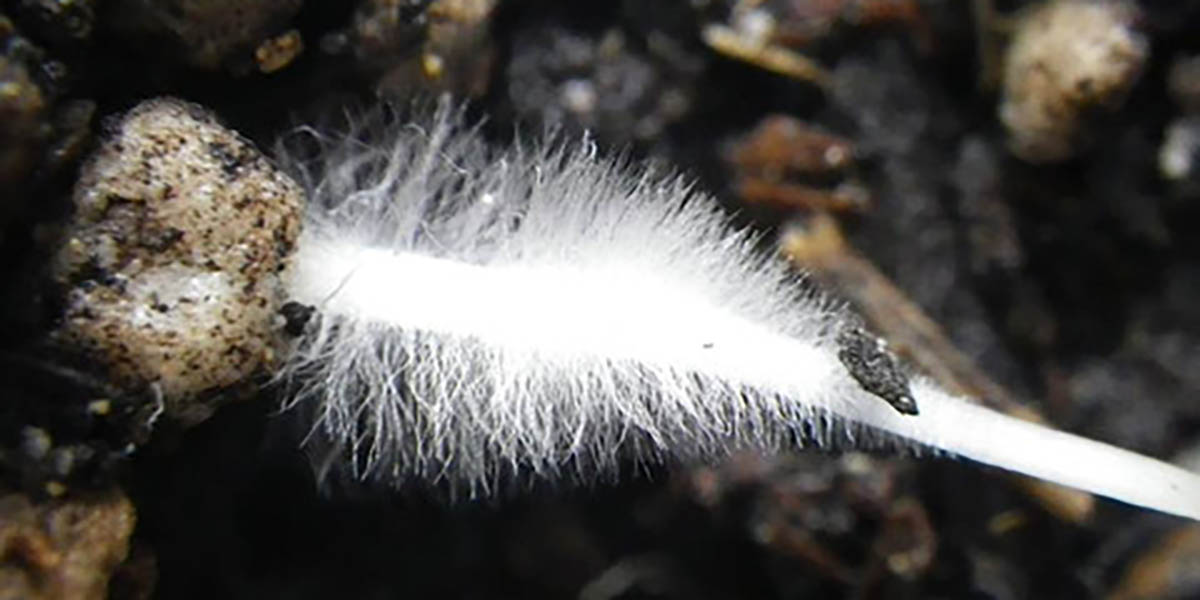Those crazy scientists have done it again, throwing generally accepted theories of life science out the window. A group of Australian researchers have shown that plants are able to consume whole bacteria and yeast cells. Prior to this, our understanding of the root/microbe relationship revolved around the idea that microbes provided nutrition to plants. Bacteria can make nitrogen available, as well as solubilize phosphorus, potassium and micronutrients into forms that are plant friendly. Fungi perform a similar role, directly transporting nutrients and water into plants via the mycorrhizal networks. These mechanisms are pretty well understood and accepted as common. What’s not so commonly known is that plants can eat whole microbes. Yes, plant roots are able to devour bacteria and yeasts. The term proposed for this newly discovered mode of nutrition is Rhizophagy (rhye-zo-fay-jee).
During the process of rhizophagy, microbes are corralled into protrusions of cell wall arising from root tissue. The cell wall closes off and traps the victims inside. The microbial cells are digested inside the plant cell, and the digested nutrients are transported through the plant and used for growth.
This mind-blowing process was discovered by drenching tomato and mustard roots in a liquid solution that contained E. coli (a non-disease causing strain of course), and the common yeast S. cerevisiae. The microbes were labeled with a fluorescent dye enabling scientists to easily see them as bright glowing dots. After the roots had been soaked for several hours, they were washed to remove any clinging microbes and then examined under a black-light microscope.
The radical scientists found the microbes were incorporated into roots cells. E.coli and S. cerevisiae glowed brightly inside of root hairs, in the outer layer of epidermal cells, and in the apoplastic space between cells. The microbes were not found past the border controlling Casparian strip, so were unable to flow freely into the plants vascular system. Another treatment of plants were soaked in a solution of fluorescent beads that were similar in size to E.coli. None of these beads were infcorporated into roots, indicating the plants were not just taking up anything that resembled a microbe, but were specifically going after the nutritious bacteria and yeast.
Now how exactly does a plant eat a microbe? Looking into it with a high powered electron microscope, scientists saw a structure begin to grow around the glowing E. coli cells. The microbes were being enveloped by what looked to be a cell wall growing out of the root. By adding a cellulase activity indicator (tagged in detectable gold), it was seen that indeed the newly forming wall was chemically similar to the cellulose of a cell wall.
To determine what triggered the growth of the cell wall, the scientists grew the plants in a fluorescent broth which glowed when cellulase (an enzyme that would allow a microbe to break into the cell) was used to degrade cellulose. When E.coli and florescent broth were applied to roots, the glowing markers that indicated the cellulase was breaking apart the cell walls, allowing the microbes entry in to the cell. They were not able to determine if the cellulase was coming from the plants or the bacteria, so keep your eye out for future studies.
To make sure intact microbes were not transported through the plant, scientists examined leaf tissue for the fluorescing microbes by growing out microbes found in and on the leaf. No glowing
microbes were found. They also soaked plant roots with disease causing Salmonella, and found no evidence of it’s presence in plant tissue either.
So, what were the plants doing with those yummy microbes? Well, they saw that microbes took from 10-14 days to be fully degraded in the plant’s root cells. Then, by growing the plants in the presence of another type of identifiable E.coli (labeled with a radioactive isotope of nitrogen), it was shown that the nitrogen from the E. coli had been moved up the stem and incorporated into leaf tissue. This proved that the plants were using the microbes for nutrition.
This study raises a lot of questions. Do plants use this mechanism for nutrition constantly, or just under certain conditions. Are plants selective for which microbes they will consume? Can we feed them certain microbes to induce a certain response? Can we bulk up our microbes with micronutrients so that they are passed along to the plant? Does the genetically modified DNA of those glowing microbes affect the plant?
Our understanding of plant/microbes dynamics is always evolving. Studies like these pave the way for future bio-fertilization systems. What will you be feeding your garden next year? Maybe you will be feeding your microbes first, then letting the garden feed itself.
This summary references the following journal article:
Paungfoo-Lonhienne, C., Schmidt, S., Webb, R. I. and Lonhienne, T. G. A. (2013) Rhizophagy—A New Dimension of Plant–Microbe Interactions, in Molecular Microbial Ecology of the Rhizosphere: Volume 1 & 2 (ed F. J. de Bruijn), John Wiley & Sons, Inc., Hoboken, NJ, USA.
Summary By: Luke A. Besmer, TeaLAB


